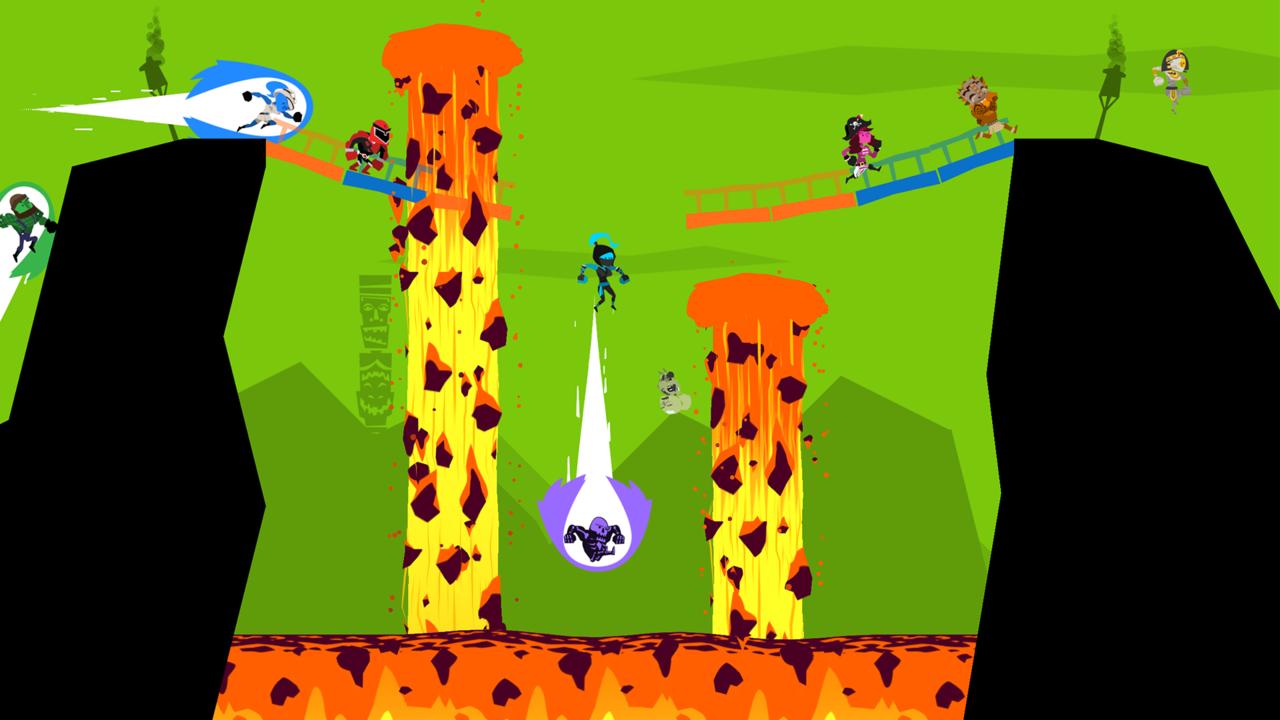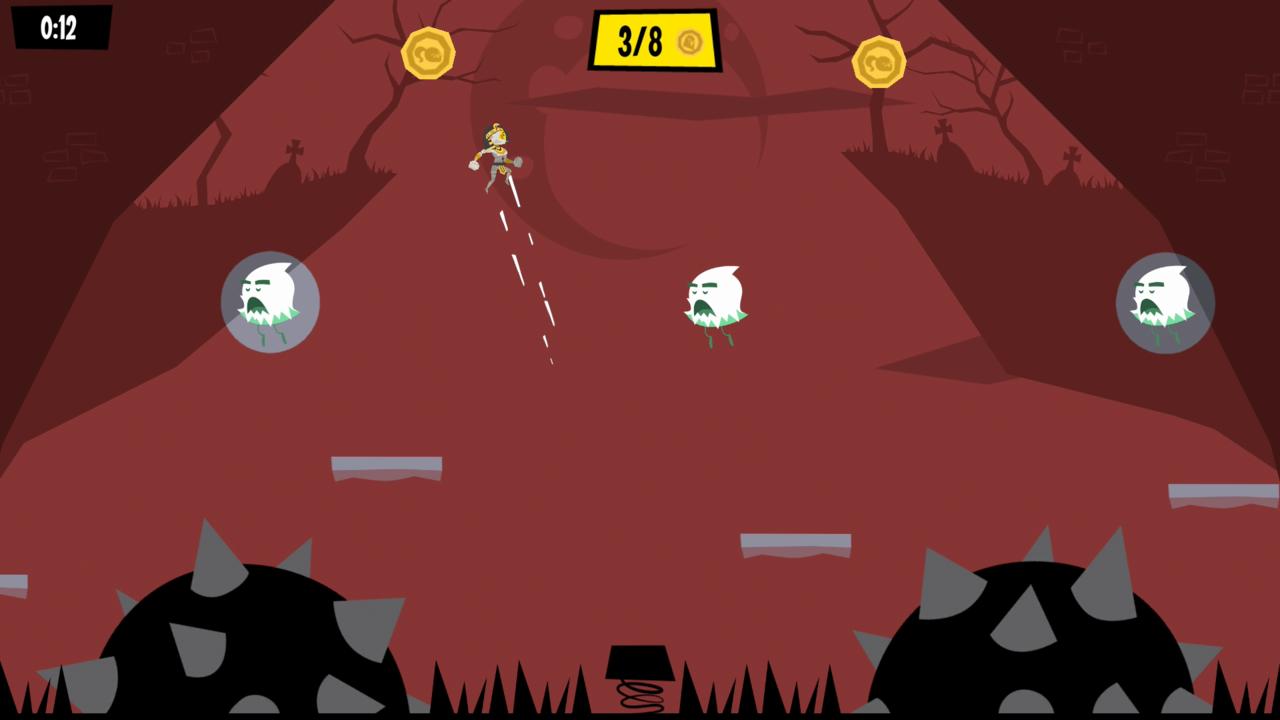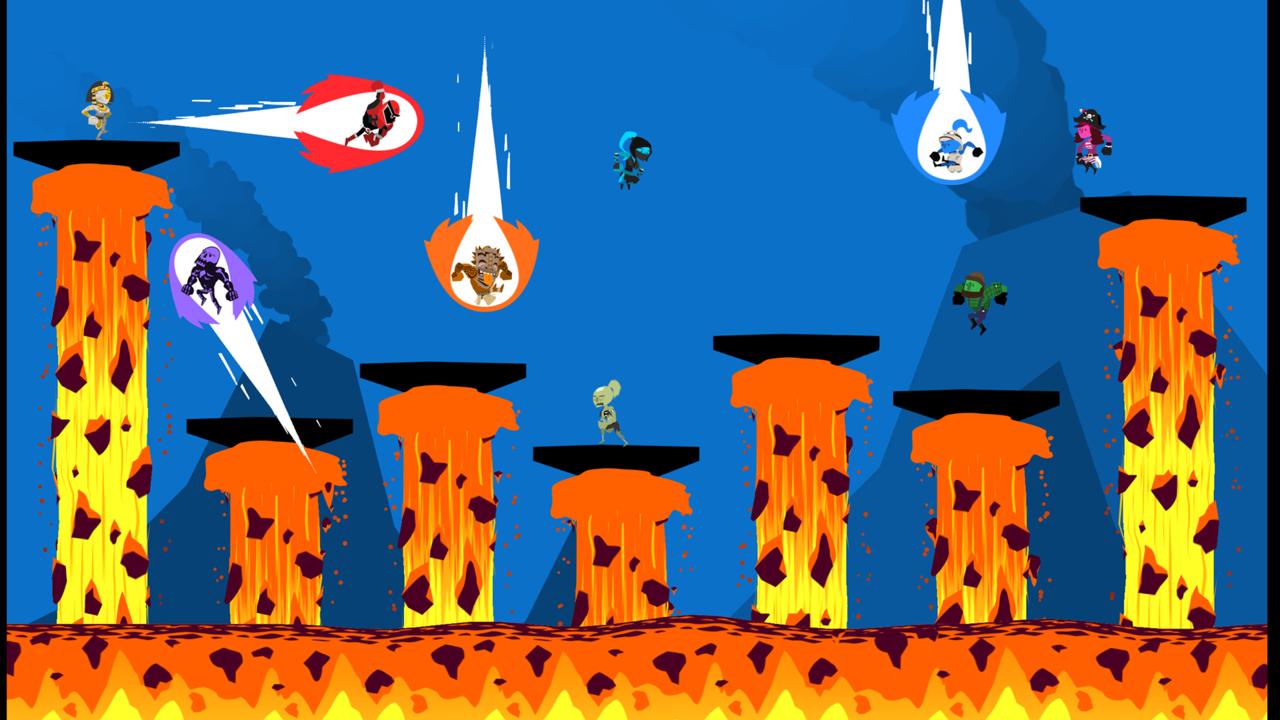Runbow, a strikingly colorful 2D platformer, not only challenges you to overcome its perilous obstacles, but also lets you race and punch eight other friends in a chaotic dash to the finish line. Its levels play out like linear assault courses, with moving platforms, pits of spikes and other classic videogame obstacles, which is a lot to manage when you're surrounded by eight other racers. With a full party racing towards the finish line, Runbow's multiplayer modes are an absolute blast. Photo finishes become memorable snapshots of how close or far away you were from grasping victory, and it will almost always be a close race as you leap, lunge, or even punch your way through the competition on the slightest chance that you can leapfrog someone.
Runbow's ingenious twist on the disappearing platform mechanic from Mega Man plays a key role throughout the game. Here, backgrounds shift from one color to the next, and if a platform matches that color, it disappears completely until the next cycle occurs. This creates a bold visual effect, but more importantly, the need to rethink your next move at a moment's notice.

This is difficult when dealing with a squad of opponents, but almost too easy when playing Runbow solo. The shifting platforms may keep you on your toes, but the game telegraphs what color is coming up just far enough in advance for you to safely plot your way to the end. Enemies try to stand in your way, but they're fairly ineffective barriers that you can simply hop over or punch. Still, the game remains enjoyable thanks to the virtual acrobatics required of you, and a large selection of levels.
The slightly disappointing difficulty in solo mode is forgivable, though, because of the sheer chaos that occurs when racing with a swarm of opponents. The timing it takes to traverse the ever-changing landscapes suddenly gets interrupted by someone dashing into you. A person jumping in front of you derails your momentum, often sending you plummeting into the spikes below. A cluster of players clumped around a platform you're all aiming for can turn a standard platforming moment into a punishing battle for space. It's not like you can take your time like you can when playing the level alone--it is a race, after all. Should your character scroll off screen, you die, and since the pace for screen scrolling is set by the leader, you're forced to keep up. Being in the lead is intoxicating when you can continue sprinting and dragging the screen with you, making all the stragglers fall off in the process.

Victories, even small ones such as bumping players off, feel great, because Runbow is designed to make you struggle all the way to the finish line. You're equipped with the ability to jump, of course, but you can also double jump and perform an uppercut that launches you in the air. Since the main obstacle in Runbow is pitfalls, you'll be fighting against gravity a lot. I can't tell you how many times I missed a platform due to a color switch, only to wildly press up and the jump button over and over again in a frantic display of ineffectual flailing. If this sounds similar to trying to stay on the screen when the race leader drags it away from you, it's because it is. The best thing about Runbow is not in precision platforming; it's in scraping together a victory--or even just survival--by scrambling to execute a life saving maneuver and wondering how the heck you survived that gauntlet by the skin of your teeth.
There are other multiplayer modes that test your reflexes, but they don't capture the same excitement as standard races. Arena battles take place on a single screen and task you with knocking your opponents into spikes or pits, all while remaining on color-shifting platforms. King of the Hill fares slightly better, challenging you to last ten seconds in a specially designated square of space. The problem with these modes is that they reveal the players' move sets as minimal and uninteresting, at least in the context of fighting. Runbow is at its best when it's encouraging forward momentum, and these single-screen challenges don't capture the same kind of madcap chaos that the core game does.

Runbow is a game about playing spoiler. It's about you knocking your friend into a wall of spikes just as they're about to capture the cup. It's about a hostile environment trolling you as the next cascading color rips the platform you were aiming for from underneath you. But most of all, Runbow is about laughing at the colorful chaos on screen, regardless if you're on the giving or receiving end.